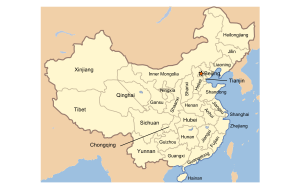CHINA MARKET
Entering Chinese Business-to-Business Markets: The Challenges & Opportunities
The challenge of China market entry has become an increasingly important one of Western companies of all shapes and sizes. Despite a difficult economic climate in Europe and the United States, China’s economy has continued to grow by double-digit rates over the last couple of years. With the country poised to overtake the US as the second largest global economy by 2020 and destined to remain an engine of global growth for the next decade, understanding how to enter large and complex market has become critical to most companies in the B2B sphere.
Within China, rapidly changing demographics, rising incomes, increased consumer spending and an increasingly open business environment have all helped to make the Chinese market increasingly attractive to Western businesses across a variety of industries. Similarly, declining sales in their home markets has forced many US and European companies to relocate China firmly to the centre of their long-term global growth strategies.
Breaking into the China market successfully can seem like an almost impossible task to foreign companies with limited or no experience of doing business there. The aim of this white paper is to highlight some of the key challenges that foreign companies face when entering the China market for the first time, and to offer some practical recommendations that can be integrated into a company’s China market entry and expansion plans.
Identifying The Market
With a population that exceeds 1.3 billion people and a land mass larger than the United States, China’s sheer size and scale presents challenges uniquely distinct from any other market (including other Asian markets such as Japan and South Korea). While it is true that China represents a huge potential market for foreign manufactured goods and services, it is also the case that understanding where these opportunities lie and how to access them can be extremely challenging. Whether it be the large Western multinationals with an established China presence or the first-time market entrant with no previous China experience, foreign companies of all shapes and sizes often find their China success stymied through insufficient lack of local understanding.
The first realisation that foreign companies often need to make is that China is in no way a uniform and homogenous market. Although China is unified in the geo-political sense, socially and economically the picture is much more disparate and fragmented. Uneven rates of economic growth in different parts of China over recent years have served to exacerbate many of the economic and social differences that already existed between different provinces. For example, there are huge variations between different provinces in terms of population levels, per capita GDP, average income levels, consumer spending habits, education levels, literacy rates, lifestyles and so on. As such, it is certainly no exaggeration to state that rather than representing a single, unified market, China is actually a collection of individual sub-markets defined by vastly differing demographic, economic and cultural characteristics.
Figure 1 – Map of China’s 33 Provinces and Administrative Regions
The nature and make-up of markets in different parts of China also varies considerably, which means that foreign companies should think carefully about which geographical location offers the best vantage point to target the broader China market. In the past, foreign businesses have often been drawn to coastal provinces such as Zhejiang, Guangdong, Jiangsu and Shanghai, due to higher populations and incomes in those areas. In particular, foreign companies involved in consumer markets have tended to focus their attentions on these higher income coastal regions.
Although foreign companies in the b2c sector still remain focused on coastal cities, business-to-business markets are often far more geographically scattered. As in many countries, China has actively encouraged the setting up of industrial clusters in specific cities or regions, and in many cases entire industry supply chains can be concentrated in a small handful of cities. In many b2b markets, such clusters can help foreign companies to know where its target customers are, which cities to focus on and even where to base its operations (particularly where local manufacturing will take place). The first step of any effective China market entry strategy is therefore to identify the geographical location of the target market(s) and the best specific location to target first.
etc….







